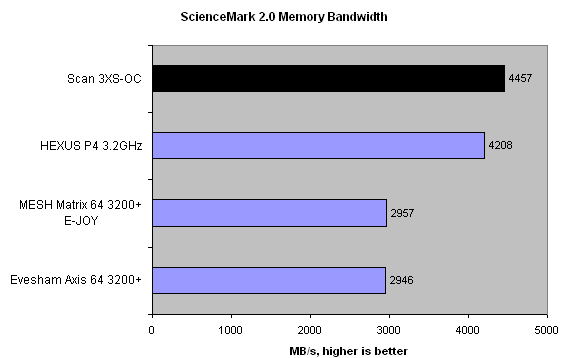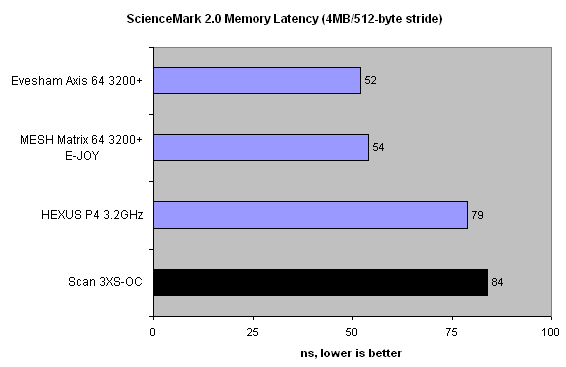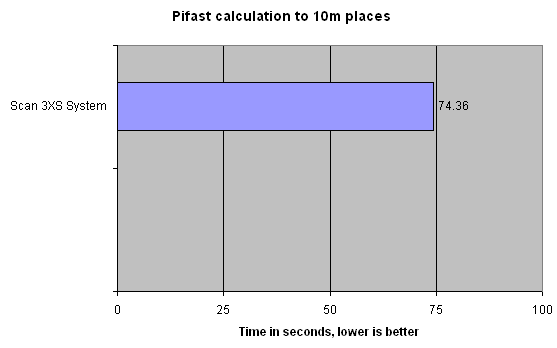ScienceMark 2.0 and Pifast
We'll start off with our customary look at memory analysis.
ScienceMark 2.0 naturally puts the Scan overclocked system on top of the memory bandwidth test. Dual-channel memory architecture and a CPU that's designed to make the most of it means that 240MHz FSB and synchronous RAM take top honours. We're surprised that the lead isn't greater over a standard 200MHz FSB / PC3200 comparison system. We could put the proximity of the HEXUS' scores down to its use of lower latency timings, perhaps.

Latency, though, is higher. What ScienceMark 2.0 doesn't quite tell us is that the ABIT IS7 Springdale board is not setup to emulate the PAT technology found on various Canterwood chipsets. We've seen other i865PE boards use their own brand of PAT-like enhancements, be it Super PATCH (DFI) or MAM (ASUS). Scan has set this IS7 up with pure SPD timings an no other performance enhancements. That's why believe that the overall speed of 3126MHz / 240MHz FSB won't be put to the best use.

Even accounting for the 80MHz or so clock deficit to the standard 3.2GHz P4 setup, we can see that the increased FSB and memory speeds don't do bolster performance as much as expected. That's down to the SPD reasons given above. As an example, a well-tuned Canterwood with a 3.2GHz CPU will hit around 61s in this benchmark. Note that the top two runners use the impressive AMD Athlon 64 3200+ CPU. They may be low on bandwidth and pure clock speed, but they more than make up for it in other areas.









